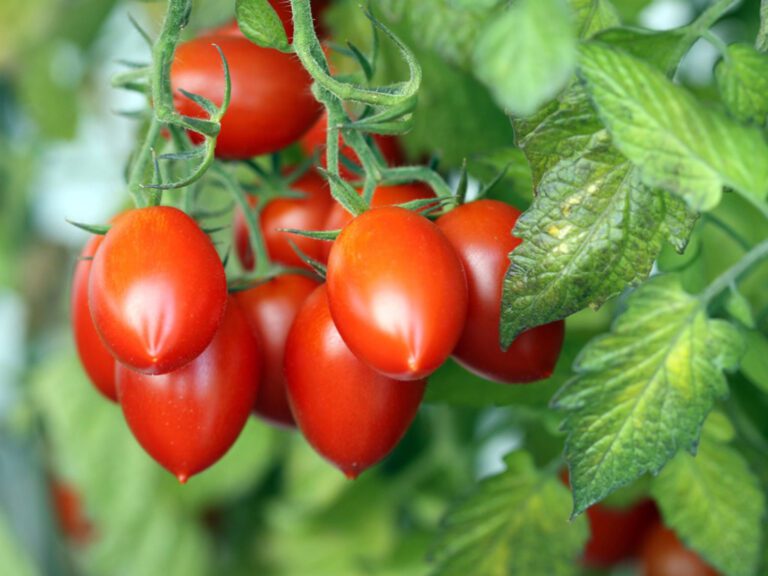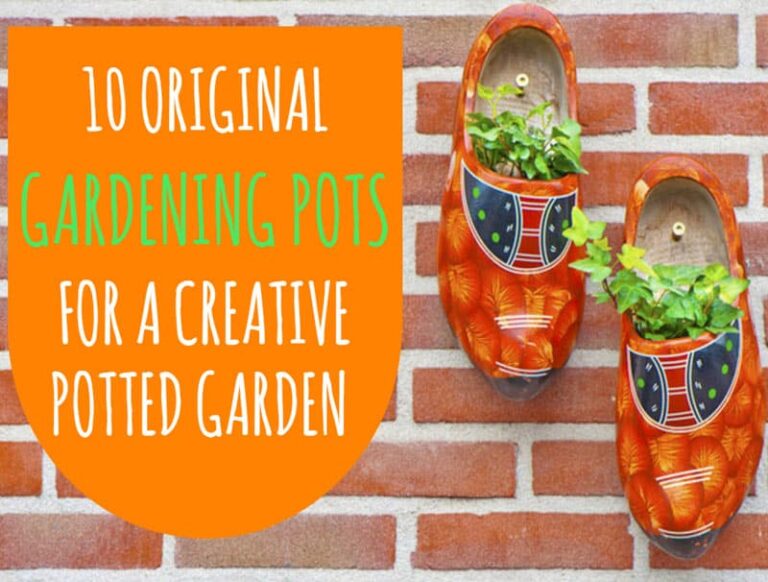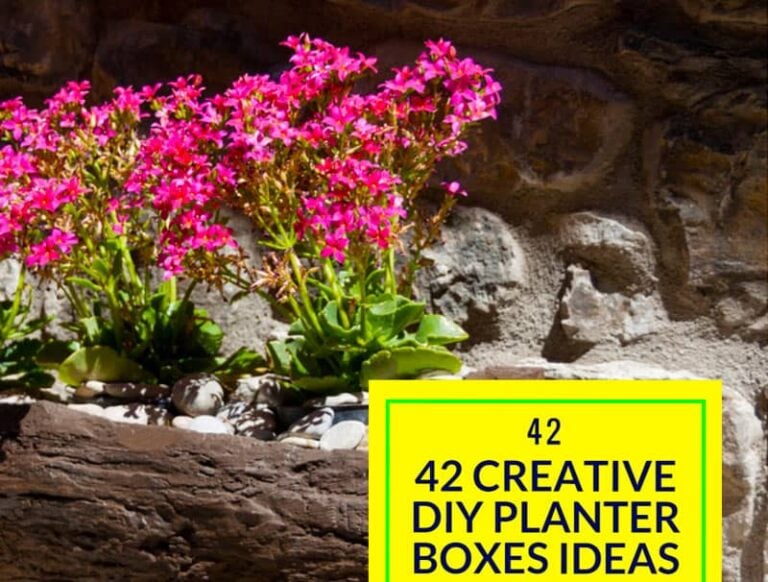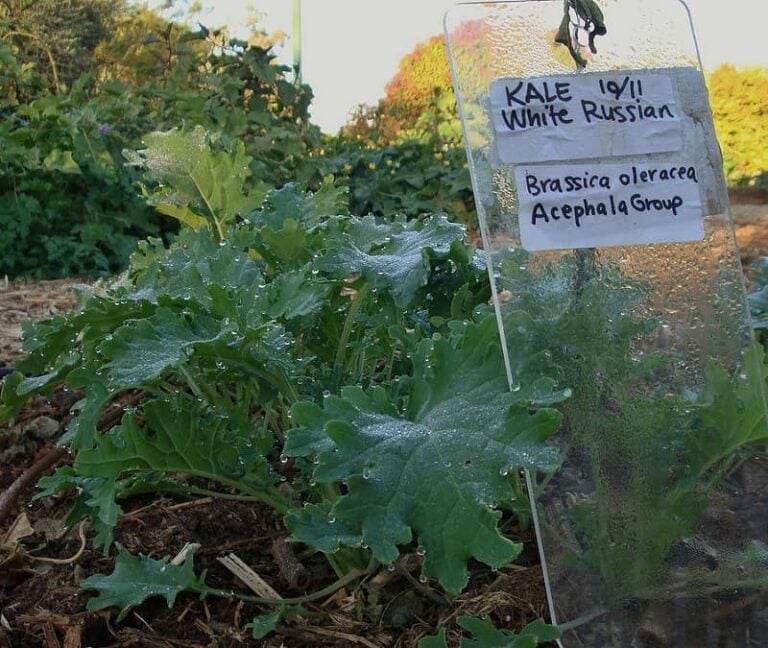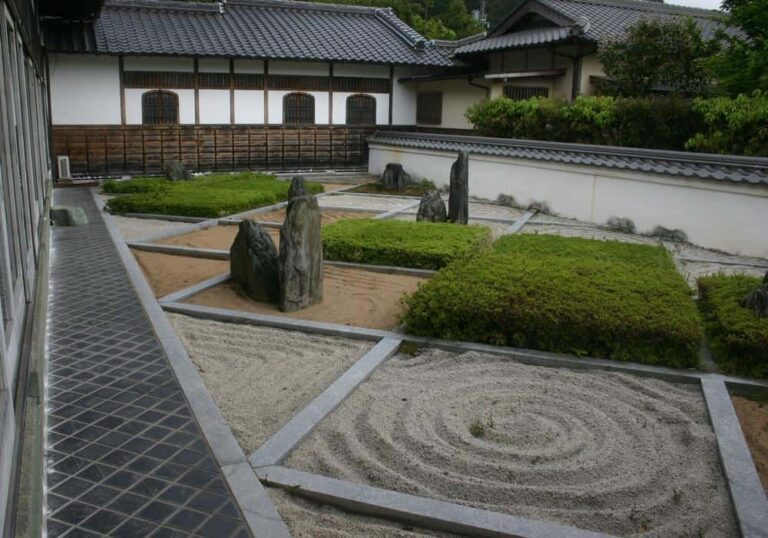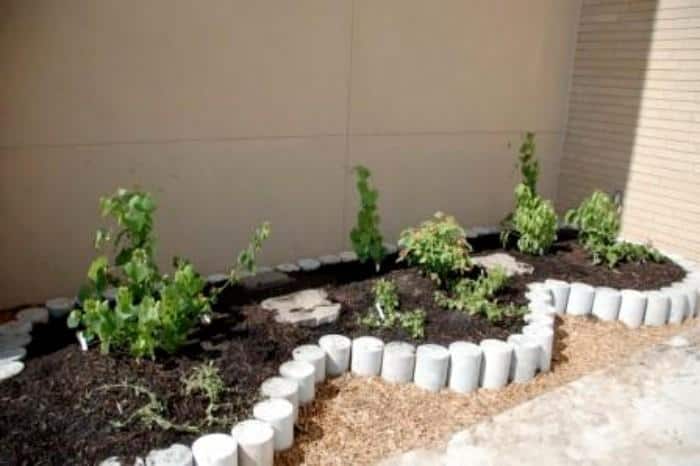11 Easy To Grow Flowering Herbs For Your Yard
Beautiful and delicious, flowering herbs are ideal to grow in a small backyard, or in pots on a balcony. With a “double functionality”, you’ll get to enjoy both beauty and flavor. But what are the best herbs to grow in a restricted space? And above all, which herbs have the most attractive flowers?
While ultimately the choice depends on your preference, we’ve selected 11 easy to grow flowering herbs you can consider for your backyard. Check them out in the list below.
1. Garlic

A member of the allium family, garlic is one of the most popular aromatic plants to use in the kitchen. With dozens of beneficial properties, garlic is easy to grow and it doesn’t require much space in the garden. You can grow it from individual cloves broken from the bulb, or you can even start your garlic from seeds if you want to.
Like all plants, garlic produces a flower, and some varieties are planted exclusively as ornamental plants. Ornamental garlic produces a starry pouf of tiny purple flowers that adorn the landscape and flavor up your recipes.
Ornamental garlic still produces bulbs and the blooms are delicious when sautéed. And although most gardeners grow garlic as an annual, the plant is actually a perennial and needs minimal maintenance and care.
2. Chives

Somehow similar to garlic, chives are also part of the allium family. A beautiful perennial that requires little space in the garden, chives sprout in brunches from the bulbs and grows up to a foot tall. But despite this, the plant thrives in pots and loves the indoors, as long as it’s exposed to the sun.
Somehow similar to the garlic flowers, chives blooms look like small puffballs with a pinkish-purple shade than lives up the beauty of your yard. The flowers can decorate the landscape throughout the summer, and the plant adds flavor to many dishes.
Use chives in salads or to flavor your dips. Create edible decorations and beautify your outdoor space year after year. Just be aware that these whimsical pinkish-purple flowers produce seeds that can easily spread and take over the whole garden unless you remove them on time.
3. Anise

Anise is another amazing perennial to consider for your flowering herbs garden. The plant is characterized by an upright branching stem that blooms in mid-late summer.
There are two types of anise, both producing beautiful but quite different flowers. Traditional anise produces starry white flowers or anise hyssop that produces spikes of purple flowers that resemble lavender.
Both anise and anise hyssop attract pollinating bees, butterflies, and other beneficial insects, while the leaves and flowers spread an amazing fragrance. The plants grow about three feet tall and both the dried flowers and the leaves make an ideal addition to potpourri and other aromatic decorations.
4. Dill

Used in numerous dishes, from refreshing salads to pickling cucumbers and everything in-between, dill is another flowering herb to consider for your edible garden. This annual plant produces a cluster of bright yellow flowers that grow two or three feet tall.
Dill loves the sun and does exceptionally well in the garden, but it doesn’t require special maintenance or extra-care.
If you want to make the most out of your edible herb, fennel is another plant to consider. Fennel produces a flower that is very similar to dill, and the taste of the aerial leaves closely resemble dill. But fennel root is just as delicious and has numerous beneficial properties.
Regardless of your choice, make sure you plant your herb in a well-draining soil and that you don’t overwater.
5. Thai Basil

There are dozens of types of basil that makes beautiful flowers. But our favorite is Thai basil. This exotic variety impresses with a strong scent of licorice and boasts reddish-purple spikes that bloom in late summer.
The leaves have a strong flavor that is quite different from that of traditional basil, although they may start to lose flavor once the blooming begins.
Nevertheless, Thai basil is still an amazing plant that can be grown exclusively for decorative purposes, both in the garden or in a pot. Like all basil, Thai basil loves sunshine and water. Make sure you provide plenty of both if you don’t want to grow a weak, leggy plant.
And if Thai basil is not quite of your liking, Cardinal basil is another lovely variety that boasts decorative inflorescences. Or, just go for traditional basil if you care more about the flavor and less about the flowers.
6. Bee Balm

If you’re aiming to grow something different, bee balm is one of those plants that’s rarely spotted in the gardens. But besides producing amazing flowers, bee balm is also edible. This perennial herb can be used to flavor salads and jellies, or to brew tea from the leaves.
As its name suggests, bee balm is a true magnet for bees and other beneficial insects. And the bright red flower impresses with its peculiar puff shape.
Pick and purple bee balm are two other varieties to consider, and you can even grow all three types to create a colorful and edible herb garden in your backyard.
7. Echinacea

Also known as purple coneflower, Echinacea enhances the beauty of all gardens with amazing clumps of sturdy stems decorated with pink flowers with orange-brown centers that resemble the daisies. The plant loves water and thrives in areas along water streams, yet adapts well to most environments as long as you provide sufficient irrigation.
The plant blooms in midsummer and decorates the garden until late fall. Growing three to four feet tall, Echinacea is used as a treatment against cold or flu. Just brew some Echinacea tea in the cold season to combat all winter diseases. Alternatively, use the plant to make skin lotions or creams that treat the rash and other skin conditions.
If you’re not into purple, you should also know that Echinacea comes in a wide range of colors that include white, yellow, and pink.
8. Chamomile

Boasting characteristic daisy-like flowers with white petals and yellow centers, chamomile is one of the cutest herbs. Inspiring purity, chamomile also has a host of beneficial properties and it can be used in teas, homemade cosmetics and lotions or creams.
When choosing your plants, be aware that there are two main varieties, the German and the Roman chamomile.
Both plants produce similar flowers and have similar properties, but one, the German, grows taller and is an annual, whereas the Roman chamomile is more of a groundcover plant and is a perennial. Both varieties grow well in similar conditions and thrive in cooler environments and partial shade. Like many other flowering herbs, chamomile is drought-resistant and doesn’t require special care.
9. Rosemary

Rosemary is one of the most flavorful herbs to use in the kitchen. This evergreen herb has a shrub appearance and dark green needle leaves that resemble fir trees. Blooming in the summer, the perennial has either white or purple flowers that add color to the bush and to your garden.
While it doesn’t like too cold climates, rosemary can be left outdoors all year long if you live in an area with mild winters. If there is frost in your area, just bring the plant inside during the cold season.
Rosemary thrives in containers and loves sunshine. Use well-draining soil and make sure to not overwater if you want to grow a healthy plant. Like many other edibles, this herb is a true magnet for bees and pollinators and a true mosquito repellent.
10. Gentian

Gentian is another of those rare edibles to see in a flowering herbs garden. Yet, impressing with its bright blue flowers, this plant looks and tastes amazing.
A wildflower spread all over the world, Gentian comes in over a thousand species and thrives in all conditions. Some varieties are adapted to forests and thrive in shade, other love desert-like environments and in other words, you’ll be able to find the right gentian variety to grow in your garden no matter where you live.
Ranging from small herb to a tree, gentian is pollinated by bees, hummingbirds, and butterflies. The trumpet-shaped blooms are simply attractive, and the perennial is ideal to use to flavor bitters, liqueurs, and beer, due to its digestive properties.
11. Lavender

Lavender is probably the most renowned of all flowering herbs. With characteristic deep purple flowers and an intense fragrance, lavender will not only beautify your backyard but it will also keep annoying mosquitoes at a distance.
Like most flowering herbs, lavender is drought-resistant and requires minimal care once established. It thrives in a garden or in a pot and prefers sunny spots and well-draining soils. The plant has a shrub-like appearance and doesn’t grow tall, but impresses with its circular shape.
Renowned for its fragrance, lavender is grown for its blooms that are either used to flavor sauces, cakes, and teas or used in flower arrangements or to make handmade cosmetics, candles, and potpourri.

